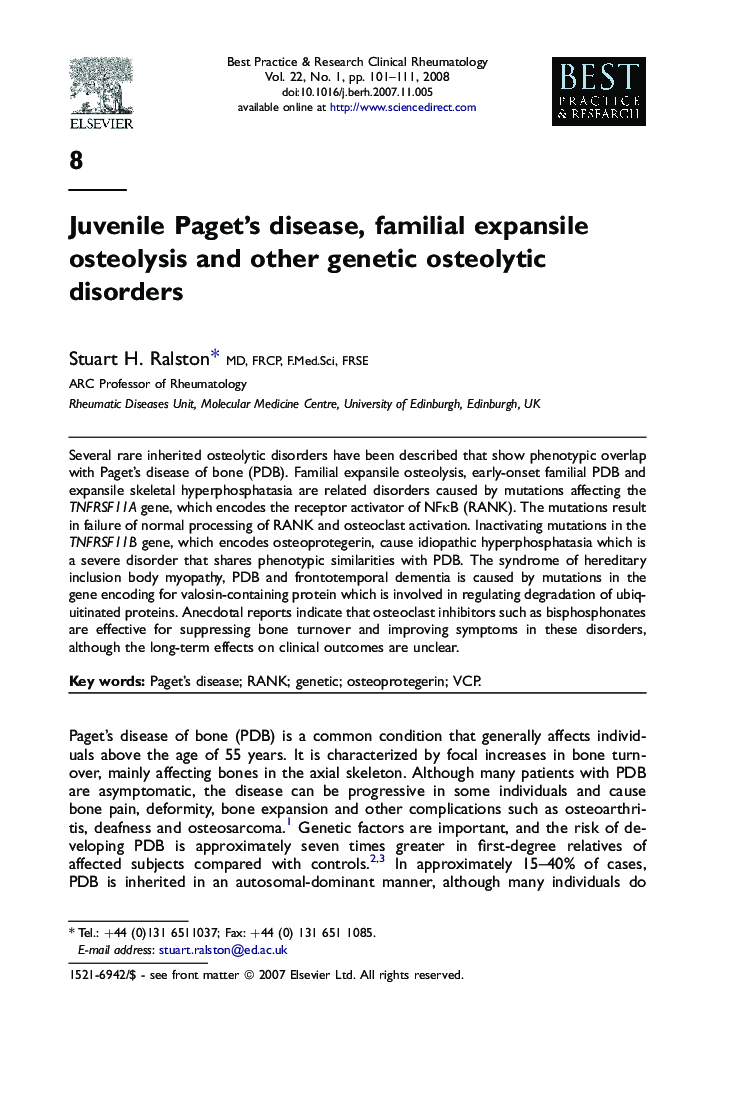| Article ID | Journal | Published Year | Pages | File Type |
|---|---|---|---|---|
| 3343585 | Best Practice & Research Clinical Rheumatology | 2008 | 11 Pages |
Several rare inherited osteolytic disorders have been described that show phenotypic overlap with Paget's disease of bone (PDB). Familial expansile osteolysis, early-onset familial PDB and expansile skeletal hyperphosphatasia are related disorders caused by mutations affecting the TNFRSF11A gene, which encodes the receptor activator of NFκB (RANK). The mutations result in failure of normal processing of RANK and osteoclast activation. Inactivating mutations in the TNFRSF11B gene, which encodes osteoprotegerin, cause idiopathic hyperphosphatasia which is a severe disorder that shares phenotypic similarities with PDB. The syndrome of hereditary inclusion body myopathy, PDB and frontotemporal dementia is caused by mutations in the gene encoding for valosin-containing protein which is involved in regulating degradation of ubiquitinated proteins. Anecdotal reports indicate that osteoclast inhibitors such as bisphosphonates are effective for suppressing bone turnover and improving symptoms in these disorders, although the long-term effects on clinical outcomes are unclear.
